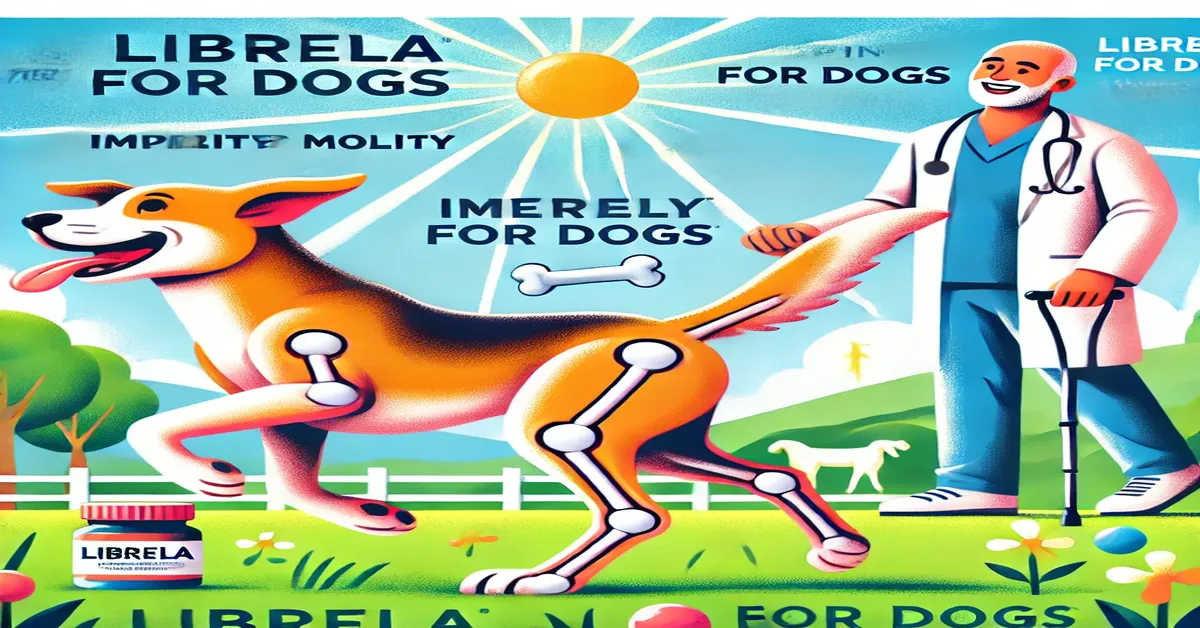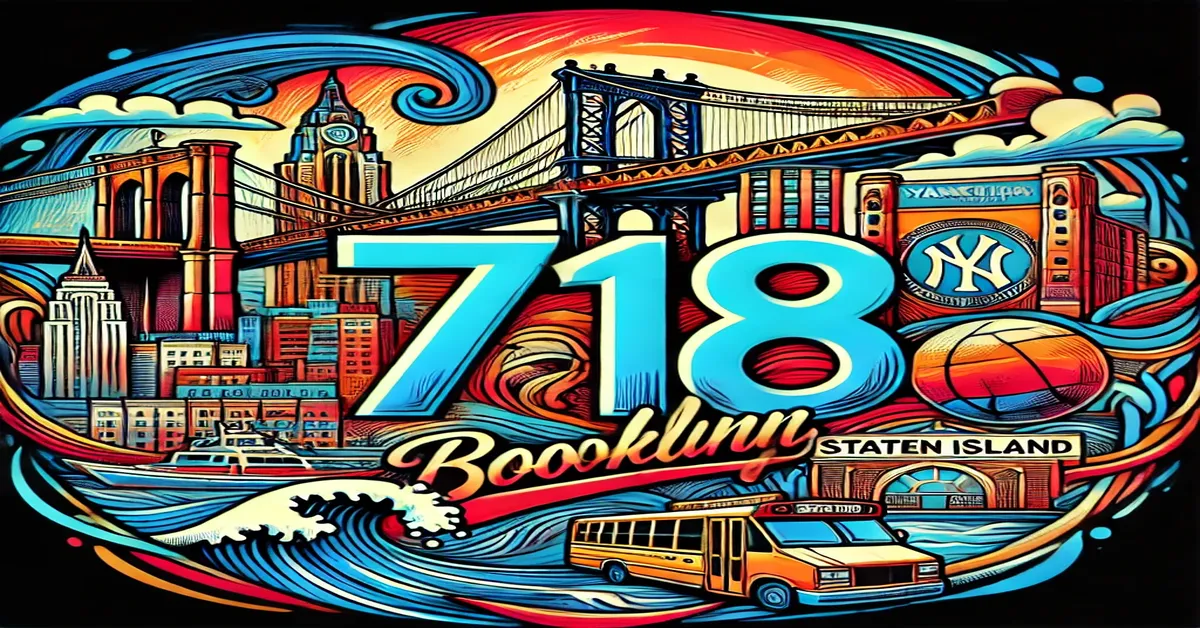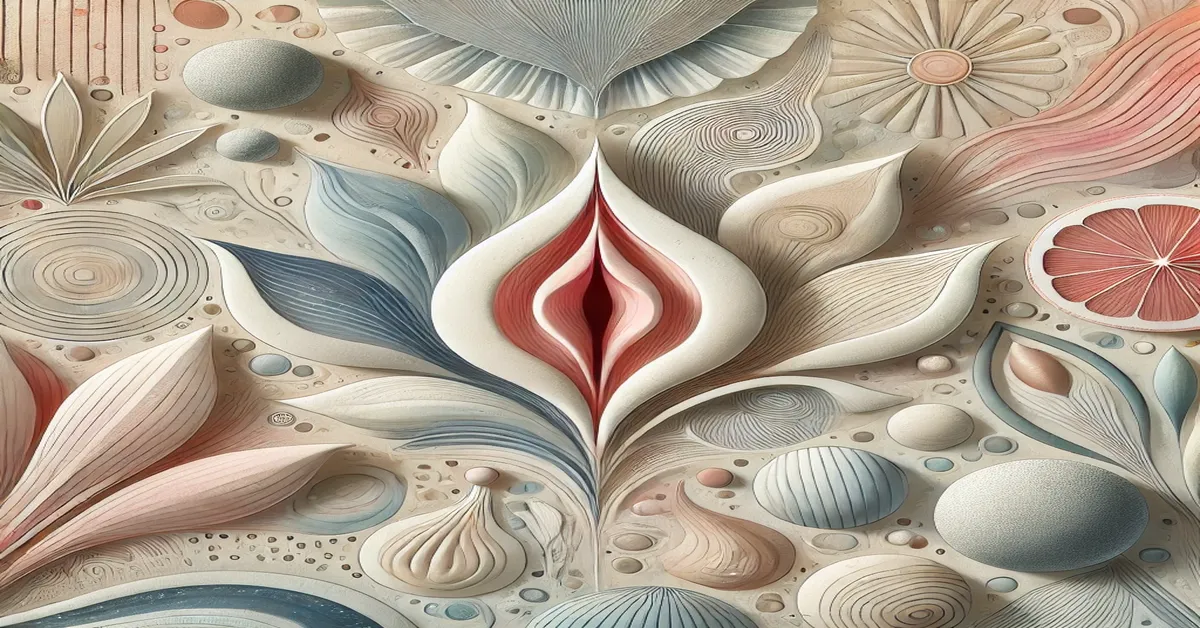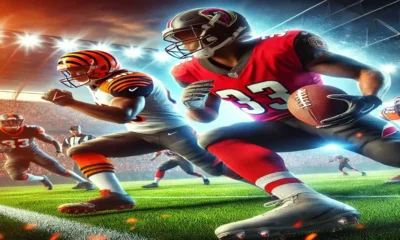Topic
Librela for Dogs: Revolutionizing Pain Management in Canines

As our loyal companions age, they often face health challenges that can diminish their quality of life. One of the most common issues in older dogs is osteoarthritis, a degenerative joint condition that causes chronic pain, stiffness, and reduced mobility. For years, the mainstay of osteoarthritis treatment has been non-steroidal anti-inflammatory drugs (NSAIDs), but these often come with limitations and risks. Enter Librela for dogs, a groundbreaking treatment offering a new, targeted approach to managing chronic pain. Librela, known generically as bedinvetmab, is a monoclonal antibody designed to alleviate the pain associated with osteoarthritis in dogs. This article delves deep into the science, benefits, and considerations of using Librela for dogs, exploring how it is changing the landscape of veterinary care.
What is Librela for Dogs?
Librela is a monoclonal antibody that targets nerve growth factor (NGF), a key mediator in pain signaling. Approved for veterinary use, this innovative medication provides a more targeted and potentially safer alternative to traditional pain management options. Unlike NSAIDs, which can have gastrointestinal, renal, and hepatic side effects, Librela works by neutralizing NGF, thereby disrupting the pain signaling pathways associated with osteoarthritis.
The medication is administered as a monthly subcutaneous injection, making it convenient for pet owners and ensuring consistent relief for affected dogs. With its unique mechanism of action and favorable safety profile, Librela for dogs represents a significant advancement in managing chronic pain.
Understanding Osteoarthritis in Dogs
Osteoarthritis is a progressive condition characterized by the degeneration of joint cartilage. In dogs, it can result from aging, injury, or genetic predisposition, particularly in larger breeds. Common signs of osteoarthritis in dogs include:
- Limping or stiffness, especially after exercise or rest.
- Reluctance to climb stairs, jump, or engage in physical activities.
- Behavioral changes, such as irritability or reduced interest in play.
- Difficulty standing up or lying down.
If left untreated, osteoarthritis can severely impact a dog’s quality of life, leading to chronic pain and reduced mobility. Early diagnosis and effective management are critical to ensuring that dogs with osteoarthritis can continue to lead comfortable and active lives.
How Librela for Dogs Works
The mechanism of action behind Librela is what sets it apart from traditional treatments. Nerve growth factor (NGF) is a protein involved in the development and maintenance of pain pathways. In conditions like osteoarthritis, NGF levels are elevated, contributing to chronic pain and inflammation. Librela’s monoclonal antibody specifically binds to NGF, preventing it from interacting with its receptors. This neutralization disrupts the pain signaling cascade, offering significant relief to dogs suffering from osteoarthritis.
Because Librela targets a specific protein rather than affecting the entire inflammatory system, it minimizes the risks associated with broader-acting medications like NSAIDs. This specificity is what makes Librela a safer and more effective option for many dogs.
Clinical Efficacy of Librela for Dogs
The development and approval of Librela were based on rigorous clinical trials. Studies conducted in both the United States and Europe demonstrated that Librela significantly reduced pain and improved mobility in dogs with osteoarthritis. Key findings from these studies include:
- Dogs receiving Librela showed marked improvements in pain scores compared to those receiving a placebo.
- Pet owners reported increased activity levels and overall quality of life in their dogs.
- Librela’s effects were sustained over a monthly dosing period, providing consistent relief.
These positive outcomes led to Librela’s approval in the European Union in November 2020 and in the United States in May 2023. Today, it is widely regarded as a transformative option for managing osteoarthritis pain in dogs.
Benefits of Using Librela for Dogs
The advantages of Librela extend beyond its efficacy in pain management. Here are some of the key benefits:
- Targeted Mechanism of Action: Librela’s specific targeting of NGF allows for effective pain relief without the systemic side effects associated with NSAIDs.
- Convenient Administration: The once-a-month injection schedule simplifies treatment for pet owners, ensuring consistent dosing and eliminating the need for daily medication.
- Improved Quality of Life: Dogs receiving Librela often experience significant improvements in mobility, activity levels, and overall well-being.
- Favorable Safety Profile: Clinical studies have shown that Librela is generally well-tolerated, with fewer side effects compared to traditional treatments.
- Alternative for NSAID-Intolerant Dogs: For dogs that cannot tolerate NSAIDs due to underlying health conditions or adverse reactions, Librela provides a much-needed alternative.
Administration and Dosage
Librela is administered as a subcutaneous injection by a licensed veterinarian. The dosage is determined based on the dog’s weight, ensuring precise and effective treatment. The monthly administration schedule offers several advantages:
- Consistent pain relief without the peaks and troughs associated with daily medications.
- Simplified treatment regimens for pet owners, reducing the likelihood of missed doses.
- Regular veterinary check-ups during injections, allowing for ongoing monitoring of the dog’s condition.
Safety and Potential Side Effects
While Librela has a favorable safety profile, it is essential for pet owners to be aware of potential side effects. The most commonly reported side effects include:
- Increased blood urea nitrogen levels.
- Urinary tract infections.
- Bacterial skin infections or dermatitis.
- Injection site reactions.
- Vomiting and weight loss.
Veterinarians may recommend periodic blood tests to monitor kidney function and overall health in dogs receiving Librela. As with any medication, it is crucial to report any unusual symptoms or concerns to the veterinarian promptly.
Comparing Librela to Traditional NSAID Treatments
NSAIDs have long been the cornerstone of osteoarthritis management in dogs. While effective at reducing inflammation and pain, these drugs can pose risks, particularly with long-term use. Common side effects of NSAIDs include gastrointestinal upset, kidney damage, and liver toxicity. For dogs with pre-existing conditions or those requiring prolonged treatment, these risks can outweigh the benefits.
In contrast, Librela offers a targeted approach with fewer systemic effects. By specifically neutralizing NGF, Librela avoids the broader impact on the inflammatory system, reducing the likelihood of side effects. For many dogs, this makes Librela a safer and more sustainable option for managing chronic pain.
Considerations and Contraindications
While Librela represents a significant advancement in veterinary medicine, it may not be suitable for all dogs. Key considerations include:
- Allergies or Sensitivities: Dogs with known hypersensitivity to bedinvetmab or other monoclonal antibodies should not receive Librela.
- Underlying Health Conditions: Dogs with certain medical conditions may require alternative treatments. A thorough veterinary assessment is essential before starting Librela.
- Age and Weight Restrictions: Librela is typically recommended for adult dogs diagnosed with osteoarthritis. Puppies or dogs with undiagnosed conditions may not be suitable candidates.
Librela’s Role in the Future of Veterinary Medicine
Librela’s approval marks a significant milestone in veterinary medicine, paving the way for other monoclonal antibody therapies. Its success highlights the potential for targeted treatments to address chronic conditions in animals, improving their quality of life and offering new options for pet owners.
As research continues, we may see similar advancements in the management of other conditions, from chronic pain to inflammatory diseases. For now, Librela for dogs stands as a testament to the possibilities of innovative veterinary care.
Conclusion
Osteoarthritis is a debilitating condition that affects millions of dogs worldwide, causing chronic pain and reduced mobility. Traditional treatments have their limitations, making the introduction of Librela for dogs a game-changer. With its targeted mechanism, monthly dosing, and favorable safety profile, Librela offers a new lease on life for dogs suffering from osteoarthritis.
As with any medical treatment, the decision to use Librela should be made in consultation with a veterinarian. By understanding the unique needs of each dog and weighing the benefits and risks, pet owners can ensure that their beloved companions receive the best possible care.
Read: Skylarmaexo: A Rising Star in the TikTok Universe
FAQs
- What is Librela for dogs?
- Librela is a monoclonal antibody (bedinvetmab) used to manage osteoarthritis pain in dogs by targeting nerve growth factor (NGF).
- How does Librela work?
- It neutralizes NGF, disrupting pain signaling pathways and providing relief from chronic pain associated with osteoarthritis.
- How is Librela administered?
- Librela is given as a subcutaneous injection by a veterinarian, typically once a month.
- What are the side effects of Librela for dogs?
- Common side effects include increased blood urea nitrogen, urinary tract infections, injection site reactions, vomiting, and weight loss.
- Is Librela suitable for all dogs?
- While generally safe, Librela may not be appropriate for dogs with certain medical conditions or known sensitivities to bedinvetmab.
- How does Librela compare to NSAIDs?
- Librela offers a targeted mechanism with fewer systemic side effects, making it a safer alternative for some dogs, especially those intolerant to NSAIDs.

Topic
718 Area Code: The Numbers That Shaped NYC’s Outer Boroughs

Few sets of numbers carry as much weight and identity as the “718 area code.” For decades, these three digits have symbolized not just a means of connection but a deep-rooted pride for those who live and work in New York City’s outer boroughs: Brooklyn, Queens, the Bronx, and Staten Island. Beyond just being a technical necessity in the phone system, the 7-18 area code has grown into a cultural artifact, steeped in history and resonating with generations of New Yorkers. Whether you’re a longtime resident or a curious outsider, exploring the 7-18 area code offers a vibrant window into the essence of life in the Big Apple’s diverse neighborhoods.
A Landmark Moment: The Birth of the 718 Area Code
Introduced in 1984, the 718 area code was born out of necessity as New York City’s booming population and burgeoning businesses led to an unprecedented demand for phone numbers. Until then, the iconic 212 area code served the entire city. However, as growth exploded beyond Manhattan, the need for a separate area code became clear. This decision wasn’t just logistical; it was a cultural turning point. For many, the introduction of the 7-18 area code marked a shift in identity, distinguishing Manhattan from its surrounding boroughs and giving Brooklyn, Queens, the Bronx, and Staten Island their own unique numerical identity.
A Borough-by-Borough Dive into the 718 Area Code
Brooklyn: The Heartbeat of Creativity
Brooklyn, synonymous with art, culture, and history, proudly carries the 7-18 area code. From the historic brownstones of Bedford-Stuyvesant to the innovative tech hubs of Dumbo, Brooklyn embodies a dynamic fusion of old and new. Iconic landmarks like the Brooklyn Bridge and Prospect Park are staples of this borough, while neighborhoods such as Williamsburg and Bushwick thrive as creative epicenters.
Queens: The World’s Melting Pot
No place on Earth rivals the cultural diversity of Queens. Known as the “World’s Borough,” it hosts communities from nearly every nation, speaking over 130 languages. Under the 7-18 area code, Queens boasts unparalleled attractions such as Flushing Meadows-Corona Park, the Queens Botanical Garden, and a culinary scene that spans the globe. Whether you’re savoring dumplings in Flushing or enjoying tacos in Jackson Heights, Queens exemplifies what it means to embrace the world.
The Bronx: Where Culture Meets Innovation
As the birthplace of hip-hop, the Bronx carries a rhythmic pulse that reverberates far beyond New York City. Known for landmarks like Yankee Stadium and the Bronx Zoo, it’s a borough that blends historic pride with a forward-looking spirit. The 7-18 area code resonates deeply here, symbolizing resilience and creativity in every block.
Staten Island: The City’s Hidden Gem
Staten Island offers a tranquil contrast to the bustling streets of the other boroughs. Known for its sprawling green spaces like the Staten Island Greenbelt and cultural landmarks like the Staten Island Ferry, this borough under the 7-18 area code provides a suburban feel while remaining deeply connected to the city’s energy.
Cultural Significance of the 718 Area Code
Over time, the 718 area code has transcended its functional role to become a badge of honor for those it represents. Artists, businesses, and everyday residents alike have embraced these numbers as a symbol of belonging, with references in music, fashion, and even television showcasing the pride associated with 718.
- In Music: Hip-hop legends such as Nas and Notorious B.I.G. have immortalized the 7-18 area code in their lyrics, further cementing its place in the cultural zeitgeist.
- In Business: Local companies often incorporate the 718 digits into their branding, emphasizing their deep roots in the community.
- In Media: Movies and shows set in New York often use the 7-18 area code to instantly evoke authenticity and a connection to the city’s vibrant outer boroughs.
Challenges of the Modern Era
With the growth of technology and communication, the 7-18 area code has faced its fair share of challenges. As the demand for phone numbers soared, overlay codes such as 347, 929, and 917 were introduced to ensure enough numbers for everyone. Despite these additions, the original 718 remains a prized possession—a marker of a bygone era for many long-time residents.
Additionally, digital communication has transformed how we view area codes. While once a necessity for making connections, the advent of email, messaging apps, and VoIP services has lessened the reliance on traditional phone numbers. Yet, for many, the 7-18 area code is more than a practical tool; it’s an enduring symbol of identity.
Fun Facts About the 718 Area Code
- Pop Culture Phenomenon: The 7-18 area code has appeared in countless songs, movies, and TV shows, making it one of the most recognized area codes in the world.
- Historical First: The introduction of the 718 in 1984 marked the first time New York City was divided into multiple area codes, changing how the city was viewed forever.
- Collector’s Item: Many residents proudly hold onto their 718 numbers, considering them a piece of personal and cultural history.
Getting a 718 Area Code Today
Interested in claiming your piece of New York history with a 7-18 area code number? Here’s how:
- Through Telecom Providers: Contact your local telecom service to see if 718 numbers are available.
- Virtual Numbers: Several online platforms allow you to secure a virtual 718 number, perfect for businesses wanting a local connection.
- Porting Services: If you already have a number and wish to switch to the 7-18 area code, many providers offer porting options.
Why the 718 Area Code Matters
At its core, the 7-18 area code is more than a technical solution; it’s a testament to the resilience, creativity, and diversity of the people it represents. For millions, it’s a daily reminder of home—a numerical thread connecting them to the rich tapestry of New York City’s outer boroughs. Whether referenced in a rap lyric, splashed across a business logo, or remembered as part of a landline number, 718 is a story that’s still being told.
Conclusion
The 718 area code remains a symbol of pride, culture, and community for New Yorkers. From its origins as a logistical necessity to its role as a cultural icon, these three digits capture the essence of Brooklyn, Queens, the Bronx, and Staten Island. As the city continues to evolve, the legacy of the 7-18 area code endures, reminding everyone of the unique identity of New York’s outer boroughs.
Read: Matt Czuchry Wife: Mystery Behind the Actor’s Personal Life
FAQs
1. What areas does the 718 area code cover?
The 718 area code covers Brooklyn, Queens, the Bronx, and Staten Island in New York City.
2. Why was the 718 area code introduced?
The 718 area code was introduced in 1984 to accommodate the growing demand for phone numbers in New York City.
3. How has the 718 area code influenced culture?
It’s a cultural symbol, referenced in music, branding, and media, representing pride and identity for outer borough residents.
4. Can I still get a 718 area code number?
Yes, though availability is limited. You can obtain one through telecom providers, virtual services, or number porting.
5. What are overlay codes for the 718 area?
Overlay codes such as 347, 929, and 917 were introduced to meet the increasing demand for phone numbers.
6. Why is the 718 area code still relevant today?
Despite technological advances, the 718 area code remains a symbol of New York City’s rich history and diverse culture.
Topic
Beauty and Diversity of the Innie Vagina: An Informative Journey

The term “innie vagina” frequently appears in casual conversations, social media, and health discussions, but what does it signify? Essentially, an innie vagina describes the external appearance of female genitalia, specifically the vulva, characterized by labia minora that are not prominently visible and remain enclosed within the labia majora. This natural variation represents one of the many ways human anatomy can manifest, highlighting the diverse and unique traits present in every individual.
While the term is informal and not a medical designation, it reflects a broader understanding of how anatomy can differ significantly from person to person. These variations are often shaped by genetic predispositions, hormonal influences, and even lifestyle factors. By recognizing these distinctions, we can appreciate the inherent beauty and functionality of the human body. Moreover, discussing topics like the “innie vagina” fosters an open dialogue about body image and helps break down societal taboos around genital appearance.
Understanding that the “innie vagina” is neither better nor worse than other configurations is essential. It’s a reminder that no single standard defines what is normal or acceptable when it comes to anatomy. Instead, embracing these differences helps promote self-confidence, reduce unnecessary insecurities, and encourage a culture of inclusivity and body positivity.
This comprehensive guide aims to shed light on the topic of an innie vagina by exploring its anatomy, the factors influencing genital appearance, and addressing common myths. By understanding this subject, readers can cultivate body positivity and a deeper appreciation for anatomical differences.
The Anatomy of the Female Genitalia
To understand what an innie vagina refers to, it is essential to familiarize oneself with the anatomy of the female genitalia. The external parts of the female reproductive system are collectively referred to as the vulva, which includes:
- Labia Majora: These are the outer lips of the vulva that enclose and protect the internal structures.
- Labia Minora: These are the inner lips, which can vary significantly in size, color, and shape among individuals.
- Clitoral Hood and Clitoris: The clitoral hood is a fold of skin covering the clitoris, a highly sensitive area of the vulva.
- Vaginal Opening: This is the external opening to the vagina, located below the urethra.
An “innie vagina” describes a vulva where the labia minora are not visibly protruding beyond the labia majora. This appearance is entirely normal and does not affect an individual’s health, sexual function, or hygiene.
What Influences Genital Appearance?
The appearance of the vulva, including whether someone has an innie or outie configuration, is determined by various factors:
1. Genetics
Genetic factors play a significant role in determining the size, shape, and overall appearance of the labia. Just like other physical traits, vulvar anatomy is inherited.
2. Hormonal Changes
Hormones, particularly during puberty, pregnancy, or menopause, can influence the development and appearance of the genitalia. For instance, an increase in estrogen during puberty may affect the size of the labia minora.
3. Aging
As women age, hormonal fluctuations and changes in skin elasticity can impact the appearance of the vulva. This is a natural process and varies from person to person.
4. Lifestyle Factors
Activities such as cycling, horseback riding, or wearing tight clothing are sometimes thought to influence genital appearance. However, their impact is minimal compared to genetic and hormonal factors.
5. Medical Conditions
Certain medical conditions, such as lichen sclerosus or vulvar dermatitis, may temporarily alter the appearance of the vulva. Proper medical care can address these issues.
Busting Myths About the Innie Vagina
Misconceptions about genital appearance can lead to unnecessary anxiety. Let’s debunk some common myths:
Myth 1: An Innie Vagina Is Rare
Reality: The appearance of the vulva varies widely, and innie vaginas are just as common as outie configurations. Both are normal.
Myth 2: An Innie Vagina Indicates Virginity
Reality: The appearance of the vulva has no correlation with sexual activity or virginity.
Myth 3: Only One Type of Vulva Is Attractive
Reality: Beauty standards for genital appearance are subjective and culturally influenced. Embracing body diversity fosters self-acceptance.
Importance of Body Positivity
Promoting body positivity helps individuals embrace their unique features, including the appearance of their vulva. Here are some steps to cultivate a positive mindset:
- Educate Yourself: Understanding anatomy and normal variations can dispel insecurities.
- Avoid Comparisons: Each body is unique; comparisons to others or media portrayals are unproductive.
- Seek Professional Guidance: Consult healthcare providers for questions or concerns about genital health or appearance.
- Engage in Supportive Communities: Connect with groups or resources that promote body positivity and inclusivity.
Addressing Concerns About Genital Appearance
For those concerned about the appearance of their vulva, open communication with a healthcare provider is crucial. Common topics of concern include:
- Asymmetry: It is normal for the labia to be asymmetrical.
- Discoloration: Variation in pigmentation is common and often influenced by hormonal factors.
- Surgical Alterations: Some individuals consider procedures like labiaplasty. It is important to weigh the risks and benefits and understand that surgery is not necessary for aesthetic purposes.
Conclusion
The human body is a marvel of diversity, and the innie vagina is just one example of how individual uniqueness manifests itself in physical form. Understanding this variation as part of the broader spectrum of anatomy not only normalizes the conversation around genital appearance but also empowers individuals to embrace their natural features with confidence and pride. This guide has aimed to shed light on the topic by breaking down misconceptions, exploring the factors that influence genital appearance, and promoting a culture of acceptance and positivity.
The term “innie vagina” might seem colloquial, but it provides a gateway for important discussions about body image, societal expectations, and the pressures many people face regarding their physical appearance. By embracing a deeper understanding of this subject, readers can challenge outdated norms and foster a healthier mindset toward their bodies.
An innie vagina, like any other anatomical feature, does not define an individual’s worth or beauty. Rather, it serves as a reminder of the incredible variety inherent in human biology. Celebrating these differences contributes to a more inclusive perspective that values individuality over conformity. Whether you’re exploring this topic out of curiosity, for self-reassurance, or simply to expand your knowledge, it’s important to remember that every person’s body is unique, beautiful, and deserving of respect.
Let this conversation about the innie vagina inspire you to celebrate your body—or that of others—as a reflection of the vibrant diversity that makes us human.
Read: Understanding the Innovasis Lawsuit: Key Insights and Implications
FAQs About the Innie Vagina
1. Is an innie vagina healthier than an outie vagina?
No, both configurations are equally healthy. The terms simply describe natural variations in anatomy.
2. Can the appearance of the vulva change over time?
Yes, factors like aging, hormonal changes, and lifestyle can influence vulvar appearance.
3. Does an innie vagina require special hygiene practices?
No, basic hygiene—such as washing with water and mild soap—is sufficient for all types of vulvas.
4. Can I change the appearance of my vulva naturally?
No, the appearance of the vulva is largely determined by genetics and cannot be altered without surgical intervention.
5. Is it normal to feel insecure about my vulva’s appearance?
Yes, societal pressures can influence self-perception. Education and support can help alleviate these insecurities.
6. Should I consult a doctor if I’m worried about my vulva’s appearance?
Yes, healthcare providers can offer reassurance, address medical concerns, and provide accurate information about genital anatomy.
Topic
The Charm of Goofy Ahh Pictures: Embracing the Absurdity of Internet Humor

In the ever-evolving world of internet culture, humor takes on countless forms to entertain and connect people globally. Among the many quirky trends that have emerged, “goofy ahh pictures” have carved out a niche of their own. These hilarious, intentionally absurd images often rely on exaggerated visuals, whimsical edits, or out-of-context scenarios to deliver their unique brand of comedy. But what makes goofy ahh pictures so appealing? Why do they resonate so deeply with people of all ages and backgrounds? This article takes an in-depth look at this peculiar phenomenon, exploring its origins, impact, and staying power.
What Are Goofy Ahh’s Pictures?
The phrase “goofy ahh” is a playful twist on “goofy ass,” slang often used to describe something exceptionally silly or absurd. Goofy ahh picture’s are visual representations of this concept, embodying outrageous humor in creative and sometimes chaotic ways. These images range from distorted faces to absurd animal photos and surreal mashups of seemingly unrelated elements.
The brilliance of goofy ahh picture’s lies in their versatility. They can be memes, illustrations, or edited photographs—the format doesn’t matter as long as the outcome is delightfully goofy. This form of humor thrives on breaking expectations, offering something so absurd that it loops back to being entertaining.
The Origins of Goofy Ahh Picture’s
Like most internet phenomena, goofy ahh picture’s have roots in the broader meme culture. Memes have long served as a digital expression of humor, with early examples like “Bad Luck Brian” or “Overly Attached Girlfriend” showcasing how images can be repurposed for comedic effect. Goofy ahh pictures take this concept a step further by leaning into absurdity.
The rise of photo editing tools and apps like Photoshop, along with user-friendly platforms such as Pinterest, has made it easier than ever for people to create and share their own goofy ahh content. Pinterest, in particular, has become a hub for discovering and curating these pictures, with users compiling boards dedicated entirely to this niche humor.
Characteristics of Goofy Ahh Pictures
Goofy ahh picture’s have some defining traits that set them apart from traditional memes or other forms of digital humor. Here’s what makes them stand out:
1. Visual Distortion
One of the hallmarks of goofy ahh picture’s is their reliance on visual manipulation. Faces might be stretched, eyes disproportionately enlarged, or objects warped to look hilariously unnatural. This distortion creates an immediate sense of absurdity, which is central to their comedic appeal.
2. Surreal Elements
Goofy ahh picture’s often juxtapose unrelated or impossible elements to create a surreal effect. Imagine a giraffe wearing sunglasses and riding a skateboard—this kind of whimsical scenario is a staple in this genre.
3. Contextual Absurdity
Sometimes, the humor in a goofy ahh picture stems from the scenario itself. A perfectly normal image might be captioned or edited in a way that gives it an entirely new, hilariously incongruous meaning.
4. Nostalgia and References
Many goofy ahh picture’s draw on nostalgia or pop culture references, remixing familiar icons into ridiculous new forms. For example, cartoon characters might be placed in bizarre settings or given exaggerated features to evoke both familiarity and laughter.
Why Are Goofy Ahh Picture’s So Popular?
Humor is subjective, but goofy ahh pictures seem to have a universal appeal. Here are a few reasons why they resonate so strongly:
1. Escapism
In a world where stress and responsibilities often dominate, goofy ahh pictures offer a lighthearted escape. Their silliness is a welcome distraction from everyday life, providing a moment of pure, unfiltered joy.
2. Relatability
Despite their absurdity, many goofy ahh picture’s touch on relatable themes, such as awkward social moments or exaggerated expressions of emotion. This connection makes the humor feel personal and engaging.
3. Social Sharing
Platforms like Pinterest and Instagram have made it easy to share goofy ahh picture’s with friends and family. The act of sharing these images fosters a sense of community, as people bond over their shared appreciation for humor.
4. Creativity
Goofy ahh pictures celebrate creativity in its most unrestrained form. They encourage people to think outside the box and experiment with different styles of humor, inspiring others to do the same.
Pinterest: A Hub for Goofy Ahh Pictures
Among the many platforms where goofy ahh pictures thrive, Pinterest stands out as a key player. Known for its visually driven interface, Pinterest allows users to discover, save, and share images tailored to their interests. The platform’s search functionality makes it easy to find boards dedicated to goofy ahh pictures, ensuring a constant supply of hilarity for those who seek it.
Users on Pinterest often curate themed boards, such as “Absurd Animals,” “Funny Faces,” or “Surreal Memes,” where goofy ahh pictures take center stage. These boards act as digital galleries, showcasing the diverse ways in which humor can be expressed visually.
For example, searching for “goofy ahh pictures” on Pinterest reveals a treasure trove of content, from distorted cat photos to hilariously captioned stock images. The platform’s recommendation algorithm also ensures that once you engage with this type of content, you’ll be introduced to even more images that match your sense of humor.
How to Create Your Own Goofy Ahh Picture’s
Interested in making your own goofy ahh pictures? Here’s a step-by-step guide to unleash your creativity:
1. Start with a Base Image
Choose a photo that has potential for absurdity. This could be a funny facial expression, an unusual angle, or a random object with comedic possibilities.
2. Use Editing Tools
Leverage photo editing software or apps like Photoshop, GIMP, or Canva to manipulate the image. Experiment with stretching, warping, and adding unexpected elements.
3. Add Captions or Text
A witty caption can elevate a goofy ahh picture, adding context or irony that enhances its humor.
4. Share and Refine
Share your creations on platforms like Pinterest or Instagram to get feedback. Observing how others engage with your work can provide inspiration for future projects.
The Future of Goofy Ahh Picture’s
As internet culture continues to evolve, so too will the ways we create and share humor. Goofy ahh pictures are likely to remain a staple of online entertainment, thanks to their adaptability and universal appeal. Advances in technology, such as AI-generated images, could further push the boundaries of what’s possible in this genre.
Moreover, the rise of platforms like Pinterest ensures that goofy ahh pictures will continue to reach new audiences. As long as people value humor as a way to connect and unwind, there will always be a place for these delightfully absurd images.
Conclusion
Goofy ahh picture’s are more than just a passing trend; they’re a testament to the enduring power of humor in bringing people together. Whether you’re laughing at a distorted dog photo or marveling at the creativity behind a surreal mashup, these images remind us to embrace the absurdity of life. Platforms like Pinterest have played a crucial role in popularizing this unique form of humor, ensuring that it remains accessible and enjoyable for everyone. So next time you need a good laugh, dive into the world of goofy ahh picture’s and let the silliness brighten your day.
FAQs
1. What are goofy ahh pictures?
Goofy ahh pictures are intentionally absurd or silly images, often featuring exaggerated visuals, surreal elements, or humorous contexts.
2. Where can I find goofy ahh pictures?
You can find a wide variety of goofy ahh pictures on platforms like Pinterest, where users curate boards dedicated to this type of humor.
3. How can I create my own goofy ahh pictures?
Start with a funny or interesting base image, use photo editing tools to manipulate it creatively, and add captions or text for extra humor.
4. Why are goofy ahh pictures so popular?
They offer a lighthearted escape, foster community through sharing, and celebrate unrestrained creativity.
5. What role does Pinterest play in the popularity of goofy ahh pictures?
Pinterest acts as a hub for discovering and sharing these images, with curated boards and personalized recommendations ensuring a constant flow of content.
6. Are goofy ahh pictures a lasting trend?
While trends come and go, the universal appeal of humor suggests that goofy ahh pictures will remain a beloved part of internet culture for years to come.
-

 Guide2 months ago
Guide2 months agoTikTok Emojis: A Comprehensive Guide to Expression on TikTok
-

 Celebrity2 months ago
Celebrity2 months agoTottenham Standings: Exploration of the Club’s Journey, Challenges, and Future
-

 Education2 months ago
Education2 months agoGuide to Wordle Answer Today: Daily Word Puzzle Phenomenon
-

 Guide2 months ago
Guide2 months agoGuide to CSUF Jobs: Opportunities, Benefits, Application Process
-

 Technology2 months ago
Technology2 months agoEscort Babylon: Bridging Connectivity & Opportunity in Digital Age
-

 Celebrity2 months ago
Celebrity2 months agoSkylarmaexo: A Rising Star in the TikTok Universe
-

 Business2 months ago
Business2 months agoFisker Stock: Challenges and Opportunities in the EV Market
-

 Sports2 months ago
Sports2 months agoWashington Commanders VS Bengals Match Player Stats



